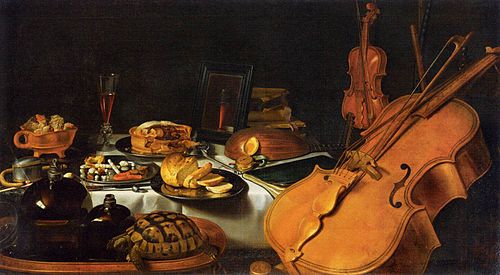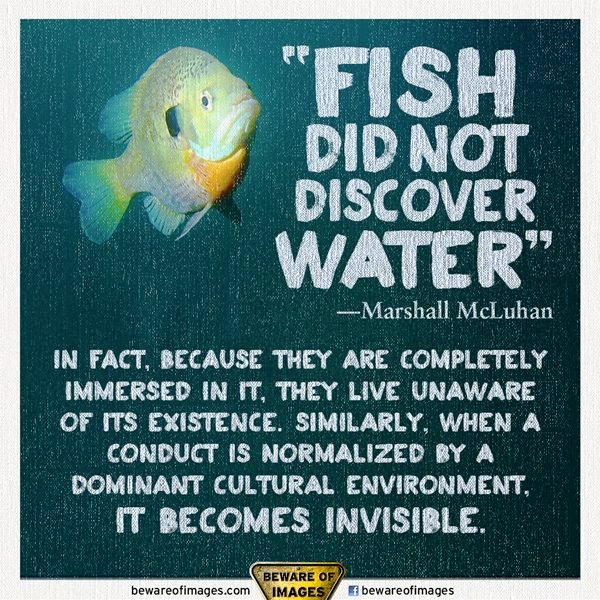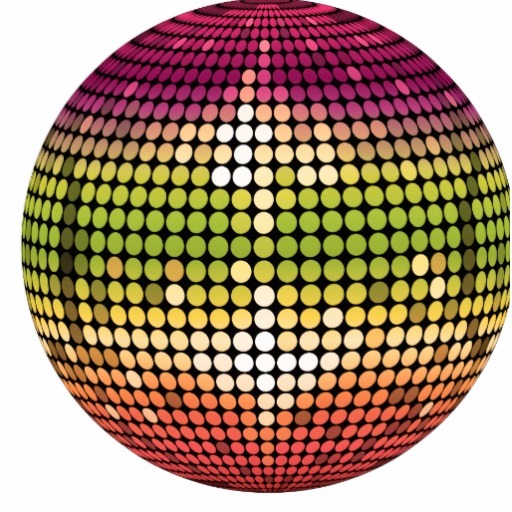MCLUHAN'S MOSAIC
My idea of the Mosaic is:
Revolving, with millions of beam probing lights reaching it and the effect, if we are in the same room it is happening, and I mean intellectually, is to decode it with our senses and make sense and use of it.
Each of these tiles are presented to our senses and may be apart in space and time limitlessly. In McLuhan's time there were practically no images or sound, what in our case, has been added.

An allegory of five senses. Still Life by Pieter Claesz, 1623. The painting illustrates the senses through musical instruments, a compass, a book, food and drink, a mirror, incense and an open perfume bottle. The tortoise could be a possible illustration of touch or an allusion to the opposite, screening of or shielding the senses (the the tortoise isolating in its shell).
If you have the patience to go through the article above, you only have to come up with the idea that any and all of the senses share the following process to do the probing of the above mosaic, (or any thing):
1 Interface or sensory
tips (skin, nose, ear, tongue and eyes);
2 Link-driven interface to the brain,
3 Physical Brain and, more importantly,
4 How the brain involved "processes" the stimulus based
5 In imagination and what was learned, is stored, and is managed by the
6 Idiosyncrasy of the holder of the entire set.
Let's
use McLuhans "tiles" to understand how that is related to our context.
The artist is the man (or woman) in any field, scientific or humanistic, who grasps the implications of his (or her) actions of new knowledge in his own time. He is the man of woman of integral awareness.
The term counterblast does not imply any attempt to erode or explode blast. Rather it indicates the needs for a counter environment as a means to perceive the dominant one.
Placing an environment inside another one through a paratextic elaboration
pattern recognition
the meaning of what we experience
It is amazing to me that literate society, specially the Ivory Tower, is something like this:

To perceive the water we are immerse and we can't see takes some ellaboration.
Verbal vocal visual
What is Point of view
The King Lear example from which he starts The Galaxy simply stinks...
I love Shakespeare and I've seem what this play intends to show in the life of my parents and grand parents and it is simply a glorious expansion of lessons from the Bible and the aspect McLuhan is trying to point out, to me, simply, does not come through. But, it does come through, though, and very clearly, from the 5th tablet on, when he discusses if the interiorization of communications means it would alter the balance of our senses, revolutionizing our mental processes. His point really comes clear when he discusses the case of why non literate societies cannot see films (10th tablet) an the example of the movie Prof.John Wilson showed to the Africans trying to point out the problem of geTting rid of still waters and the Africans could only see the chicken on it.
The best Probe in the Galaxy on the subject: Why non-literate societies cannot see films or photos without much training
The experience going on that is difficult for them to see because they lack the trainnig.
Better yet, they are trainned to SCAN everything and PARTICIPATE INTERATIVELY with what they are scanning.
For us literates it is the opposite of the situation the africans are showing us: we could see what the film meant, but we could not see the chicken in it... WE DO NOT SCAN.
We have a set of conventions we learned in the processes of becoming literate and we take it for grant and we fit the contents to it and, we assume that this is the only way to do it...
Take a loon now at this experience (or probe) that shows what it means to belong to an oral or a tipographic society!
A Probe showing this that makes sense - multisensorial dimension - adding the effect of sound and how it affect our senses.
To further understand this, the perfect example comes from the movie At First Sight
Why Jesus and Socrates didn't write.
-----------------------
McLuhan, to me, has the perfect explanation why in Portuguese we already have five translations of Ulysses: Three in Brazil and Two in Portugal.
And so it goes...
But tBut the most incredible thing, is that the language that has more versions is of Ulysses, is... English!...
1 - Odyssey Press of 1932
(including some revisions generally assigned to Gilbert Stuart and therefore
considered by many the most accurate editing);
2 - Random House of 1934;
3 - In England, Bodley Head Edition of 1936;
4 - Revised Bodley Head Edition of 1960;
5 - Revised Random House of 1961, (which I prefer)
6 - Gabler critical and synoptic of 1984.
7 - Corrected Gabler of 1986
8 - Oxford University Press (Ulysses: The 1922 text) Jeri Johnson
The analysis under McLuhan is on progress
